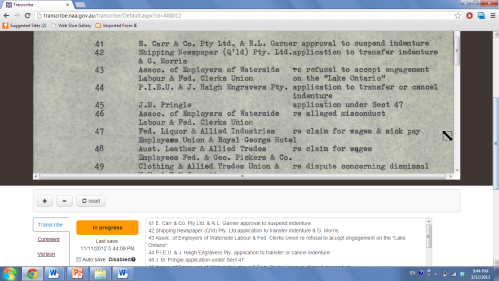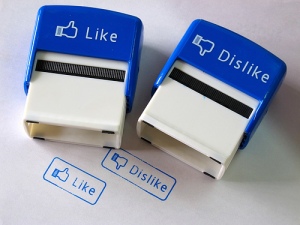If you have a huge job that needs doing, it makes sense to recruit as many people as possible to help, right?
Well, in the context of Web 2.0, this principle is known as harnessing collective intelligence, which is the first of the eight core patterns of Web 2.0, outlined by Tim O’ Reilly.

MP900433057 [Image] (n.d.) Retrieved from http://c4lpt.co.uk/new-workplace-learning/liso-fostering-collective-intelligence/
Consider this scenario. My workplace, the National Archives of Australia, is home to an inconceivable number of Australian Government records. Members of the public search our collection online for records relating to topics such as immigration, defence and Australian politics.
However, only around 25% of our collection is listed online at item level, and although that is still a significant amount of records for avid researchers to sift through, it seemed that some records were destined to go undiscovered. ‘Projections on the time it would take archives staff to describe the lists without public help currently stand at 210 years’.
Thankfully, the organisation is harnessing the collective intelligence of its passionate clients by way of The Hive, a Web 2.0 application that allows users to transcribe documents which ‘help[s] the Archives improve the discover-ability of documents by making its contents searchable’.
This concept is similar to that of Wikipedia, in that it relies on its users to contribute to its platform and trusts its users with its content, and just as many denounce Wikipedia as an unreliable information source, some in the archival profession are wary of users having such control over transcribing records.
So let’s find out how The Hive measures up to some of the characteristics of O’ Reilly’s pattern of harnessing collective intelligence.
Users Add Value
2520 of 4517 archival records on The Hive’s website are now able to be searched online as a direct result of the transcribing efforts of The Hive’s users, so it is clear that they are adding value to the Archives’ database. Some users are transcribing items so that they can request the item be digitised straight away. In this way they are adding value to the Archives’ itself as an institution, indirectly as a side-effect of their transcribing.
Users can communicate with each other by commenting on each individual record so there is the opportunity for users to connect with each other by way of their shared interests. At this point in time there isn’t an opportunity for users to create or upload their own content, but as the premise of the project is centred on reproducing and modifying content, this does not seem to be an issue.
Network effects magnify this value
Access to the archival collection increases as more and more people transcribe records, which in turns adds more value to The Hive as well as the National Archives of Australia, and as users are able to modify errors in previous entries, ‘the consistency and quality improve as more people participate’ which is the case with Wikipedia.
Reward Users First
But how does The Hive convince users to spend hours of their free time on this sort of activity?
After all, nobody does something for nothing. But O’ Reilly explains that ‘applications can be constructed in such a way as to direct their users to perform specific tasks’.
Users’ transcriptions are instantaneous, giving them an immediate sense of accomplishment, also known as intrinsic motivation. The Hive also employs gamification techniques by allocating points, providing a leaderboard and awarding prizes for a certain number of transcriptions. One of the prizes is a copy of a record of interest to the user, free of charge. Rewarding users with something that is of interest to them personally, may encourage them to continue pursuing that interest by way of The Hive.
So there you have it! Trust and reward your users and they will become your very own worker bees! Would these incentives encourage you to participate too?








